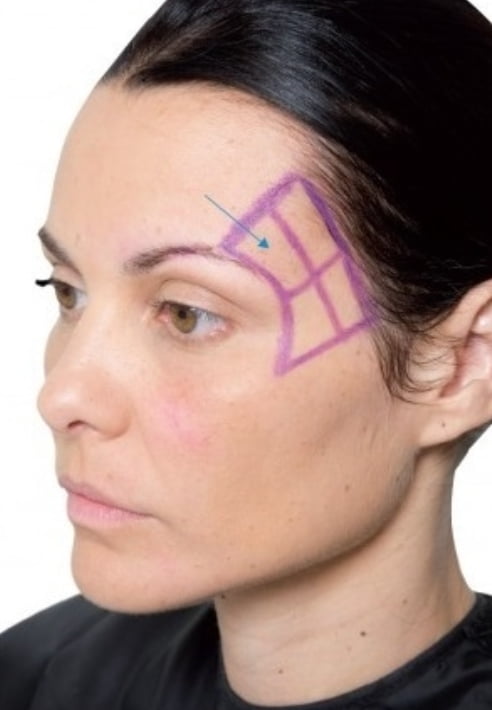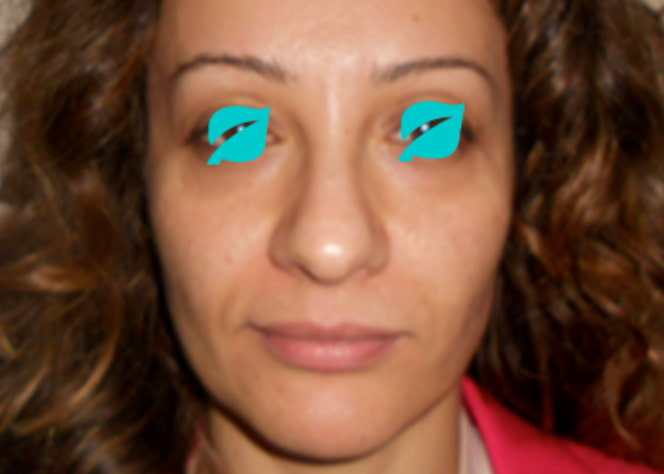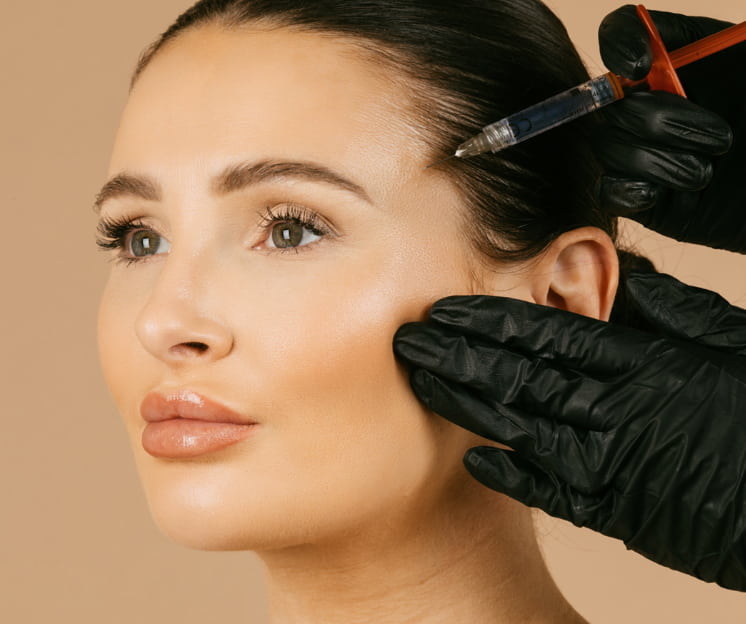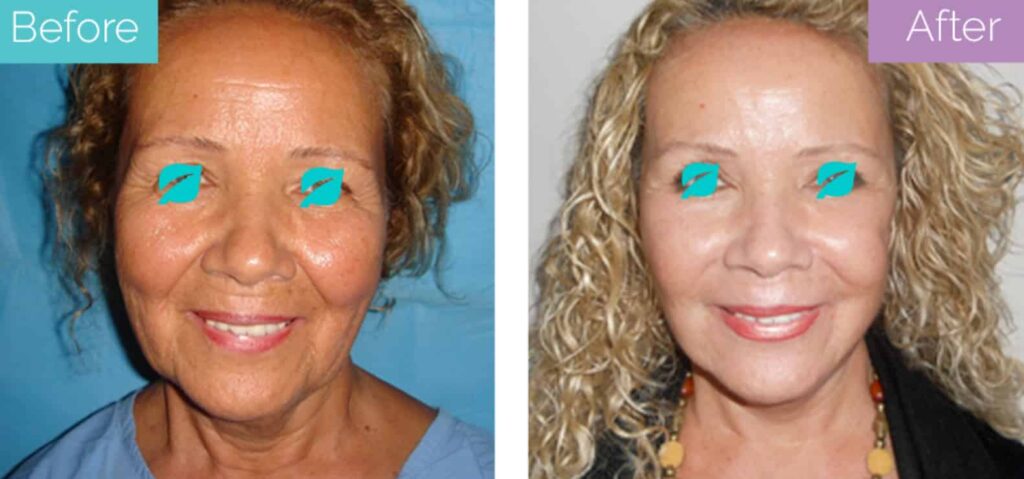Not many people think of temples when considering dermal fillers. However, injections in these areas are claimed to improve facial symmetry and aesthetics. Some even go as far as to call it a kind of facelift.
But one very commonly asked question about temple fillers is: are they even safe? This is due to the fact that injecting into the temples is generally tricky. And if something goes wrong, you can experience very serious complications like skin necrosis and even loss of vision.
And if you’re thinking of getting a temple filler, you should also be clear on what it can and can’t do for you (it’s certainly not a facelift). While it may minimise the signs of ageing, you shouldn’t expect it to have an effect on the entire upper or lower parts of your face.
In this guide, you’ll learn more about what temple fillers are, what they can do, how they’re done, and whether or not they’re actually worth it.
What Are Temple Fillers?
A temple filler is a non-surgical cosmetic treatment which involves injecting different types of dermal fillers into the small patch on the side of the face – between the ear and the forehead.

While we’re quick to notice other signs of ageing in this area, like crow’s feet, not many realise that temples also change shape with time. According to a study published in Plastic and Reconstructive Surgery – Global Open, ageing leads to loss of volume in the temple area, revealing the underlying bony structure.

Of course, weight loss and being quite athletic can also make the concave contour of your temples more prominent. But this can give the face a very “skeletal” look, which can be perceived as unhealthy, tired, and old.
The hollowing of the temples can also change the shape of the face to somewhat like a peanut. These and other cosmetic concerns make people want to consider getting temple fillers.
But an important thing to consider here is that even though temples may seem insignificant on the outside, they have a very complicated anatomy.
As mentioned before, wrong injection can lead to dire consequences, which is why you must find a practitioner who’s very knowledgeable, experienced, and qualified.
What Does Filler In Temples Do?
The purpose of a temple filler is the same as that of any other dermal filler: to add volume to an area and plump it up. But by getting this injectable in the temple area, you might also:
- Have your eyes look slightly lifted and seem more open and refreshed.
- Notice your face shape to be more balanced.
- Have the tail of your eyebrows slightly lifted.
- See an improvement in the wrinkles and fine lines in the temples.
- Find your face looking less gaunt and “shadowy.”
Is A Temple Filler Dangerous?
Temple fillers can be dangerous when improperly injected. According to a study published in Facial Plastic Surgery & Aesthetic Medicine, it can cause:
- Loss of vision
- Hair loss
- Skin death
- Stroke
- Blockage of blood vessels
- Contour irregularities
- Nonthrombotic pulmonary embolism
Therefore, you must make sure to find someone who’s experienced in temple filler injections.
What Is the Procedure For Temple Fillers?
For temple filler injections, your practitioner will begin by cleaning your target areas and then applying a numbing cream so you don’t feel pain, although some injectables already have lidocaine in them – a local anaesthetic.

Following that, some aestheticians first create an entry point in the skin for a cannula to superficially inject the filler and in a fanning motion, it’s spread across the entire area, including:
- The orbital rim (bony edge of the eye socket)
- Into the hairline
- Temporal line (near the eyebrow’s tail)
- Above the zygomatic arch (cheekbone)

Ultrasound-guided temple injections were also first described by Stella Desyatnikova in 2022 to reduce the risk posed by the placement of these injections and improve the results. Now, ultrasound is also used by many aestheticians offering this treatment.
On the other hand, some practitioners prefer a deep injection in one area of the temple and follow it up with a massage to spread the filler out. So, the techniques used can vary, but, of course, it’s a good idea for you to discuss the whys and hows with your doctor beforehand.
The entire treatment takes less than 10 minutes, and it doesn’t have any downtime either. However, you may experience some temporary side effects like redness, bruising, swelling, tenderness, or even jaw pain.
What Is The Best Filler For The Temple Area?
Only your practitioner can best advise you on the kind of filler that will be most suitable for you. However, different practitioners have mentioned using the following fillers for the temple areas:
- Hyaluronic acid (usually those on the thicker side)
- Poly-L-lactic acid (like Sculptra)
- Calcium hydroxylapatite (CaHA) microspheres (like Radiesse)
Depending on the type of filler that’s being used, the results can vary, including how long they last. In Sculptra, for instance, the results are more gradual (6-12 weeks) because it stimulates collagen production in the body.
In contrast, with hyaluronic acid (HA) fillers, the effects can be seen more immediately. However, because Sculptra makes the body produce collagen, its results can last longer. According to a study published in Clinics in Plastic Surgery, it can last for 18 to 24 months. And hyaluronic acid might last a year in your body.
Radiesse also stimulates collagen production, so its results can also take a few weeks to start showing. But it might only last for 8 months to 1 year.
Keep in mind that fillers aren’t permanent. You might need multiple sessions to continue seeing the results.
How Much Filler Do Temples Need?
You might need one syringe of dermal filler on each side of the face. One study published in the Journal of Cosmetic Dermatology noted that an average of “1.08 mL” hyaluronic acid was used for one temple.

But keep in mind that this can vary depending on different factors, such as how deeply hollowed-out your temples are. If they don’t need a lot of filler, and the area can be filled with the right amount, it can warp up your entire facial symmetry.
How Long Does Temple Filler Last?
On average, temple fillers might last anywhere from 8 months to 2 years. However, it very much depends on the type of filler that’s being used:
- Hyaluronic acid – 12 months
- Sculptra – 18-24 months
- Radiesse – 8-12 months
Some also argue that metabolism plays a role in the longevity of dermal fillers. However, the answer to that isn’t exactly yet clear.
How Much Do Temple Fillers Cost?
In the UK, one session of temple fillers might cost you £500 on average. But, of course, the price can vary depending on the:
- Amount of filler being used
- Type of filler being used (Sculptra is the most expensive, then Radiesse and then HA fillers)
- Location of the clinic
- Qualification and experience of the practitioner
Are Temple Fillers Worth It?
Temple fillers can be worth it because they can subtly change the shape of your face and make it more balanced. It can also help with the signs of ageing, and if you generally have hollowed-out temples, these fillers can add volume to them.
However, you must discuss the potential risks and complications of these fillers with your practitioner beforehand. Keep in mind that the area is difficult to inject into, and if your practitioner doesn’t have the necessary knowledge or skills, they can cause a lot of damage.
Temple Fillers Vs. Facelift: Which Is Better?
Temple fillers and facelifts are two wholly different treatments. Temple fillers are minimally invasive non-surgical injectables, while a facelift is an invasive surgical procedure.

Also, the goals of the treatments are quite different; fillers add volume to an area, while facelifts mainly target sagginess due to ageing. For a better idea, here’s a summary of the differences between the two:
| Temple Fillers | Facelift | |
| Treatment | Use hyaluronic acid,poly-L-lactic acid or calcium hydroxylapatite to add volume to temples | Cuts out excess skin, removes excess fat, and tightens underlying muscles for a smoother and taut-er skin contour |
| Candidates | Those with hollowed-out temples, showing early signs of ageing, and/or are generally skinny | Those who have severe skin sagginess, jowls, wrinkles, and fine lines |
| Anaesthesia | None required | General anaesthesia |
| Downtime | None | 2 weeks |
| Side Effects | Redness, bruising, swelling, tenderness, jaw pain, etc. | Swelling, stiffness, bruising, scarring, etc. |
| Cost | £500/session (can vary) | UK: £10,000 Turkey: £2,500 |
| Longevity | 8 months to 2 years (varies between different types of fillers) | About 10 years (quality of skin can change with age) |
Conclusion
Temple fillers can be a relatively quick fix to sunken areas on the sides of the face. And they can give you good results, provided you find an experienced practitioner who’s aware of the anatomy of that area.
There are different types of fillers that can be used. It’s always a good idea to ask your doctor why they’re recommending a particular type of filler to you. However, no matter what, it wouldn’t be fair to compare a filler to a facelift (not that everyone who’s looking for a filler needs to have a facelift).
Temple filler addresses volume loss in that particular area, but a facelift is more dramatic and focuses on changing the contour of the entire face. In any case, if you have a cosmetic concern, you should consult a board-certified doctor for a suitable treatment plan.
Reviewed and approved by Prof Dr Fuat Yuksel

